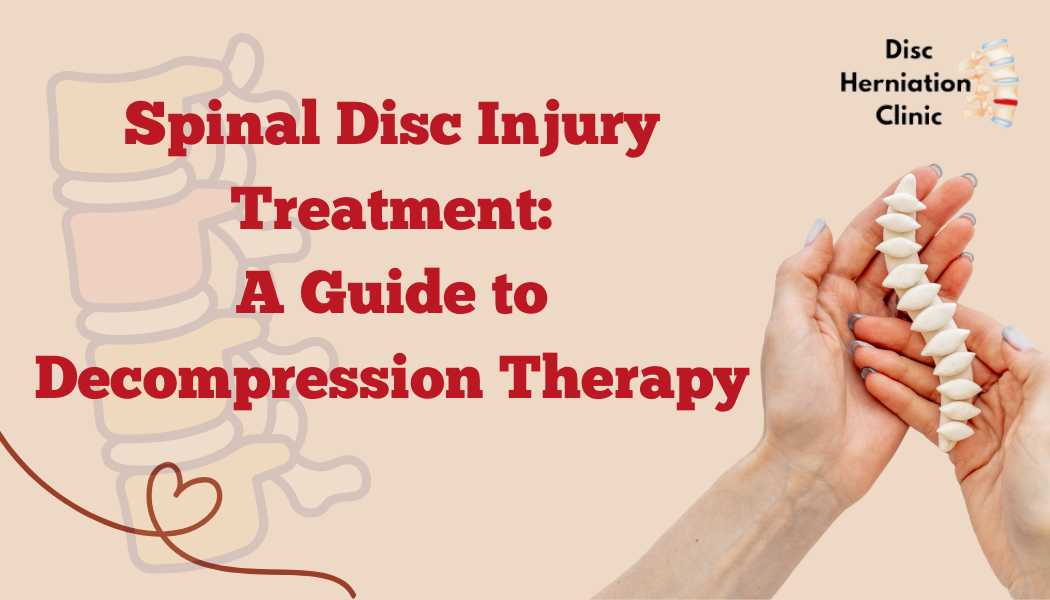
Decompression treatment is a non-invasive therapy aimed at relieving pressure on the spinal discs, allowing them to heal and function optimally. Decompression is highly successful and virtually painless. More than often patients walk out of the office with less pain than when they walked in. Conservative care of disc problems should be a first step for almost everyone. While this treatment can provide significant relief, it is crucial for patients to actively participate in their recovery process. One of the primary aspects patients need to focus on is not overloading the spine during the treatment period. This includes not bending forward or being in a forward bending posture for sustained periods of time. Sometimes working conditions or specific jobs and careers make this difficult to accomplish. Physically demanding jobs are usually challenging and can provide setbacks to treatment and care because of the consistent loading of the spine which will cause injured discs to become reaggravated. The reasoning for consecutive visits for disc pain and bulges is because patients live their lives outside of treatment. It is not realistic for patients to not go out and continue living. However, during the time when they aren’t being treated they digress but the digression isn’t beyond the treatment being performed. It’s two steps forward and half a step back. There will always be progression with treatment and in the event that patients don’t respond as well as hoped for doesn’t mean it’s the end of the road.

Patients undergoing decompression treatment should steer clear of activities that can exacerbate their spinal disc injury. This includes lifting heavy objects, sudden and jarring movements, and prolonged periods of sitting. The spine should be treated with care to facilitate the healing process and prevent setbacks in recovery. Now, this does not mean that a patient has to be bed ridden or have as little movement as possible. In fact, pain free movement through normal ranges of motion is actually encouraged. Movement allows the body to still heal without the damaging effects of potentially injuring the discs further. A patient may have constant pain from the injury but movement that doesn’t increase the pain is always good.
It’s essential for patients to shift their mindset from seeking momentary pain relief to focusing on long-term goals. While decompression therapy can provide immediate relief, the ultimate aim is to support the body’s natural healing mechanisms. Consistent adherence to the prescribed treatment plan, even when the pain subsides, is crucial for achieving lasting results. There are times when individuals see the gratifying pain relief and have a sense that everything is fine or healed. This can be quite detrimental because the normal healing processes of the body still take time and having instant pain relief does not mean that the area is fully healed. It is wise to consider the expertise of the treating doctor and continue with treatment even when the pain has receded or even completely abated. Not following a recommended treatment plan or being inconsistent with treatment can lead to longer recovery time and even make the injury worse and incur long lasting effects from the injury. Recovery from a spinal disc injury is a gradual process that requires patience and commitment. Rushing through the rehabilitation process can lead to setbacks and prolonged healing times. Patients must follow their chiropractor’s advice diligently, incorporating recommended lifestyle changes and exercises into their daily routine. It is also wise to consider having a positive outlook on therapy and treatment. This isn’t often talked about very much but being optimistic about healing and recovery has a dramatic effect on the body’s response in healing.

In conclusion, navigating spinal disc injury treatment involves a multifaceted approach, including active patient participation, long-term goal setting, proactive dealings with insurance companies, and collaboration with experienced chiropractic physicians. By following these simple guidelines, patients can enhance their chances of a successful recovery and ensure that their efforts are recognized by insurance companies. Remember, patience is key, and prioritizing long-term well-being over short-term pain relief will pave the way for a healthier and more functional future.
